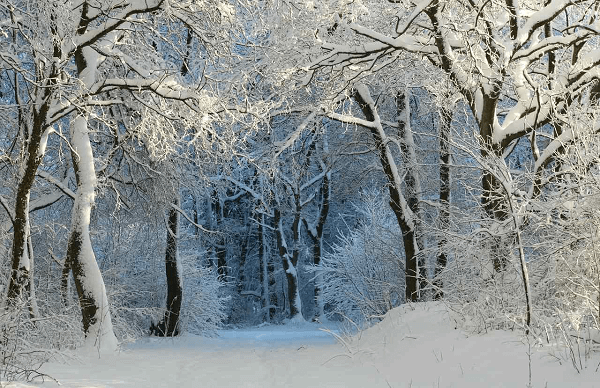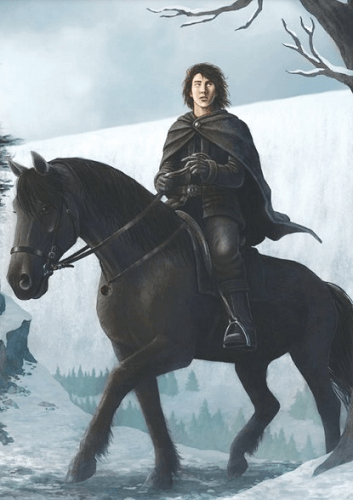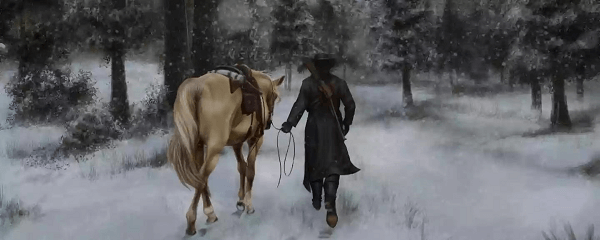Stopping by Woods on a Snowy Evening Poem Summary and AnalysisAbout the Author: Robert FrostAmerican poet and playwright Robert Frost (1874-1963) is renowned for his truthful portrayals of country life and everyday occurrences. He was one of the most well-known and renowned poets of the 20th century, and his works were recognized with four Pulitzer Prizes. Frost was raised in New England after being born in San Francisco, California. Frost's father was a journalist; from a young age, he (Frost) loved reading and writing. He briefly attended Dartmouth College before going back to farming and teaching. The beauty of nature and Frost's own experiences are frequently reflected in his poems. "A Boy's Will", Frost's debut poetry collection, was released in 1913. Later, another collection titled "North of Boston" was released in 1914. His poetry is known for its use of rural imagery and themes of isolation, loss, and mortality. Frost's most famous poems include "The Road Not Taken", "Stopping by Woods on a Snowy Evening", and "Mending Wall". His poetry has been praised for its accessibility and depth and continues to be widely read and studied today. He served as a consultant to the Library of Congress in the 1950s. He was honoured with numerous awards and accolades, including the Congressional Gold Medal in 1960. Stopping by Woods on a Snowy Evening SummaryIn the well-known poem "Stopping by Woods on a Snowy Evening" by Robert Frost, a traveller stops by the woods on a stormy, snowy night. The peaceful beauty of the forest and snow leaves the tourists spellbound, and he is tempted to stay right here and feel it all in. He comes to the realization that he must complete other tasks before he may rest, so he keeps travelling. The tone of the poem is tranquil and reflective, which captures the traveller's mood. In contrast to the traveller's sense of urgency to continue, the vision of the snowy woods conveys a sense of quiet and serenity. The poem is made more beautiful and powerful by Frost's use of language and literary elements like alliteration, repetition, and metaphors. Given the reader's viewpoint, the poem can be read in various ways and can be pursued from two completely different points of view. Some would see it as a straightforward account of a specific point in time. In contrast, other individuals might discover a deeper significance in the traveller's internal struggle between the need for quiet reflection and the demands of daily life. Overall, "Stopping by Woods on a Snowy Evening" is a lovely and thought-provoking poem that perfectly depicts the mood of a tranquil winter night and the human effort to balance our needs and responsibilities. 
Stanza 1Robert Frost's poem "Stopping by Woods on a Snowy Evening" has a meditative and serene tone that is established in the opening stanza. The narrator mentions passing a lovely scene of snow falling and the woods being enveloped in a serene quiet while walking through woodland on a winter evening. The narrator praises the scene's beauty and says he wants to stop and observe it but must continue his journey since he has duties. Line-by-line Analysis:
The first stanza's rhyme pattern is AABA (enclosed rhyme). The second and fourth lines of the poem rhyme with one another. The stanza makes use of alliteration, which is the repeating of starting consonant sounds. The repeated "w" sounds in "Whose woods these are, I think I know" and "To watch his woods fill up with snow" are examples of alliteration. The opening stanza introduces the ideas of temptation and responsibility and establishes a serene and peaceful tone for the poem as a whole. These topics will be further developed in the succeeding stanzas. Stanza 2In the second verse, the speaker imagines how his horse must be experiencing as they come to a stop on the darkest night of the year, in the middle of emptiness and isolation, particularly between some trees and a frozen lake. It's rare for the horse to stay in such a remote location because it most frequently stops close to a farmhouse or other shelter. The speaker and his horse are the only living things in a vast, snow-covered wilderness, which is conveyed by the depiction in this stanza. Line By Line Analysis:
This stanza uses the rhyming scheme BBCB, with the first, second, and fourth lines all rhyming together and the third line standing alone. In this verse, the phonetic elements used are imagery and assonance in the words "queer" and "near". 
Stanza 3In this stanza, the speaker's horse shakes the bells on its harness as if to inquire whether stopping in the middle of the woods on such a gloomy, snowy evening was a mistake. The "sweep" of the "easy wind" and "downy flake"?a soft rustling of the snow and wind?is the only other sound in the scene that emphasizes the fact that the poet and his horse are quite alone there in the middle of a cold forest. This stanza emphasizes the speaker's bond with his horse and the horse's sensitivity to the beats and expectations of their voyage. This also reflects the poet's humbleness in listening to his horse's instincts and ability to communicate smoothly with the horse. Line-by-Line Analysis:
This stanza uses the rhyming scheme CCDC, with the first, second, and fourth lines all rhyming together and the third line standing alone. The first line of this stanza sees personification. Robert Frost personifies the horse as a human being aware of his owner's wants and can ask if they need to halt in such weather. Alliteration is used in the third line "The only other sound's the sweep". The repeated 's' sound in this line is an example of alliteration. Stanza 4In this stanza, the speaker continues to describe the peacefulness and beauty of the woods. He acknowledges that the woods are "lovely, dark, and deep" but recognizes that he cannot stay there because he has "promises to keep". These promises could be responsibilities or obligations that he must fulfil. He repeats the final line, "And miles to go before I sleep", which emphasizes his recognition that he still has a long journey ahead of him before he can rest. The fourth stanza serves as a turning point in the poem, where the speaker's thoughts shift from the calmness of the woods to the reality of his responsibilities. The repetition of "miles to go before I sleep" creates a sense of urgency and reminds the reader that the speaker cannot linger in the woods for too long. Line-by-Line Analysis:
The rhyming scheme of this stanza is DDDD, as every last word of this stanza has the same rhyming. There is alliteration in the first line, "The woods are lovely, dark and deep", due to the repetition of the sound 'd'. The third line, "And miles to go before I sleep." is a metaphor because miles represent the poet's life journey here. 
Related Question/AnswersQ1. What is the main theme of the poem?Ans. The poem's main theme is the conflict between the desire for rest and life's obligations. The speaker is tempted to stay in the woods, but he has responsibilities that require him to move on. Q2. What is the significance of the title of the poem?Ans. The title of the poem reflects the speaker's journey through the woods on a snowy evening. It also suggests a momentary pause in the journey, a stopping point. Q3. What is the significance of the narrator's stopping by the woods?Ans. The narrator's visit to the woods symbolizes a desire to escape from life's obligations and responsibilities. It also symbolizes the temptation to give in to the serenity and beauty of nature. Q4. What is the role of the horse in the poem?Ans. The horse stands there to remind the narrator of his duty and obligation to continue his quest. It represents the conflict between the narrator's need for rest and his duty to proceed. The horse reminds the narrator of his responsibilities and obligations, which he can't ignore. Q5. Describe the mood of the poem.Ans. The mood of the poem is serene and tranquil, with a sense of calmness and stillness. However, there is also a sense of sadness and loneliness as the speaker is on his journey alone. Q6. What is the significance of the repetition of the last two lines of each stanza?Ans. The repetition of the last two lines of each stanza emphasizes the speaker's conflicted feelings about leaving the woods and continuing his journey. The repetition also creates a sense of rhythm and reinforces the poem's theme of obligation versus desire.
Next TopicChildhood Summary Class 11 English
|
 For Videos Join Our Youtube Channel: Join Now
For Videos Join Our Youtube Channel: Join Now
Feedback
- Send your Feedback to [email protected]
Help Others, Please Share









